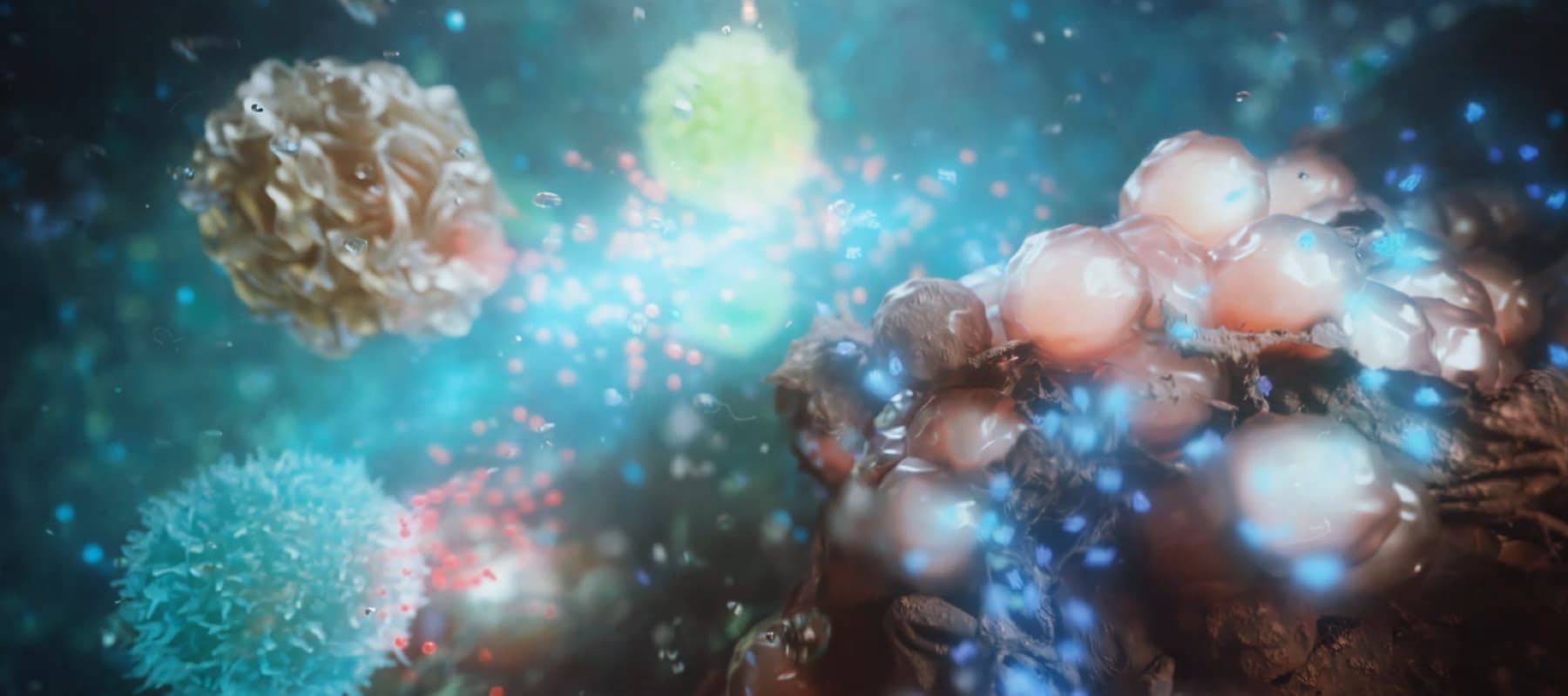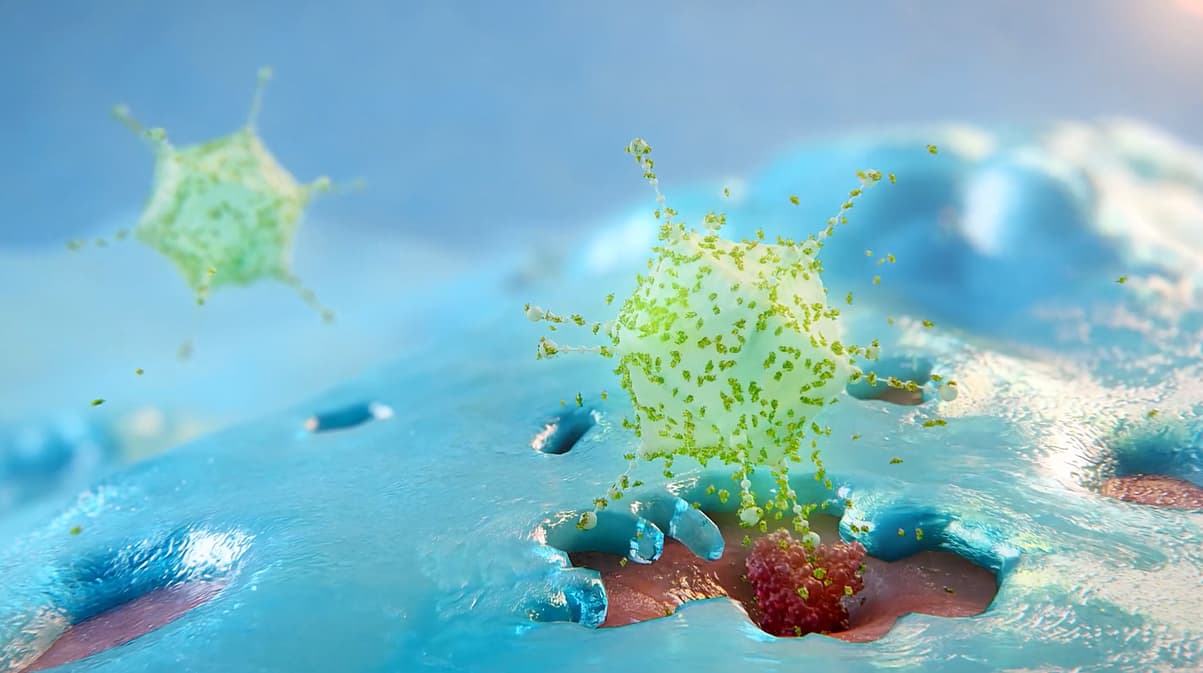
ADSTILADRIN® (nadofaragene firadenovec-vncg) – A Growing Body of Clinical Data and Real-World Evidence
For more than three decades, Bacillus Calmette-Guérin (BCG) – an intravesical immunotherapy originally developed as a tuberculosis vaccine and approved by the U.S. Food and Drug Administration (FDA) in 1990 – has been the standard of care for the treatment of non-muscle invasive bladder cancer (NMIBC).1-2 While an effective initial therapy, nearly one-third of patients treated with BCG do not respond,1 and among those who do respond, half will eventually experience disease recurrence or progression.3 Historically, these post-BCG patients were left with difficult choices, including losing their bladder through radical and invasive surgery (called cystectomy) or risking their cancer recurring and possibly progressing to more advanced stages with poorer prognoses.
From an oncological standpoint, radical cystectomy is a curative treatment option that can potentially save the patient’s life. From the patient’s perspective, however, this has long been thought a last resort treatment because it is invasive, irreversible, and carries significant risks and long-term complications that impact quality of life. According to our market research at Ferring Pharmaceuticals, preserving the bladder without risking cancer progression is a primary treatment goal for nearly 95% of healthcare providers treating NMIBC patients. However, patients who choose to keep their bladders, risk their cancer recurring, requiring repeated surgical resections; and in a proportion of patients, progressing to muscle-invasive or metastatic stage that can be deadly. For too long, their options remained stagnant.
After decades of little progress, the approval of ADSTILADRIN® (nadofaragene firadenovec) transformed this paradigm for BCG-unresponsive NMIBC with carcinoma in situ (CIS) with or without papillary tumors (±Ta/T1).4 As the first and only intravesical non-replicating gene therapy for BCG-unresponsive NMIBC, it offers patients a bladder-sparing option which is tolerable and effective. ADSTILADRIN is delivered directly into the bladder for one hour through an outpatient procedure, with a convenient dosing schedule of once every 3 months. Changing the trajectory for certain patients by bringing this much-needed innovation to the market, addressing a critical unmet need, is an inspiring 30-year journey marked by passionate persistence, groundbreaking discoveries, major investments, and a firm belief in the potential of interferon and gene therapy. This laborious and Herculean effort – much of it led by Colin Dinney, MD, of The University of Texas MD Anderson Cancer Center – required overcoming two significant hurdles, one technical and the other regulatory.
The immediate hurdle was the bladder itself. NMIBC is a local disease that ideally is addressed with localized treatment. For years, the medical community recognized the antitumor effects of interferon. Early studies suggested that instilling interferon into the bladder produces some evidence of preventing recurrence, though the effect was limited. The challenge was that the natural voiding function of the bladder did not allow for retention of interferon inside the bladder long enough to sustain a therapeutic concentration, limiting its efficacy.
ADSTILADRIN helped reimagine drug delivery to the bladder. Using a non-replicating adenovirus vector containing the gene for interferon alfa-2b, ADSTILADRIN delivers the active interferon gene into the cells of the bladder wall, causing the cells to secrete high and transient local levels of interferon alfa-2b protein. While ADSTILADRIN is only exposed to the bladder for one hour after instillation, the viral-vector is taken up by bladder cells, essentially turning them into interferon microfactories,4 and increasing the time the bladder is exposed to interferon. Continuous exposure to therapeutic levels of interferon elicits its well-known direct and indirect anti-tumor effects and enhances the body’s own natural defenses against cancer (known as immunotherapy).

Overcoming the technical hurdle represented an incredible milestone, but there was still a regulatory challenge. At the time, there were many definitions of patients who no longer respond to BCG – BCG relapse, BCG refractory, BCG intolerant – but no standardized definition that could be used as inclusion criteria for clinical trials. Working collaboratively, the uro-oncology medical community and the U.S. Food and Drug Administration (FDA) established the definition and patient criteria for “BCG-unresponsive” NMIBC in 2018.5 The FDA’s guidance for the industry provided specific recommendations for clinical trial designs and endpoints for new treatments, which played a pivotal role in shaping the clinical and regulatory framework and ultimately, supporting the development of ADSTILADRIN and the eventual FDA approval on December 16, 2022, in adult patients with high-risk BCG-unresponsive NMIBC with CIS with or without papillary tumors (±Ta/T1). When the Phase 3 results were published, a Lancet Oncology editorial even asked the question, could ADSTILADRIN be “a new gold standard for BCG-unresponsive bladder cancer?”6
Today, ADSTILADRIN is recognized as a groundbreaking bladder-sparing treatment option for BCG-unresponsive NMIBC patients and is a recommended treatment option by the International Bladder Cancer Group (IBCG),7 the NCCN Clinical Practice Guidelines in Oncology (NCCN Guidelines) and the AUA/SUO guidelines.8-9 This is based on the strength of its clinical evidence from the pivotal Phase 3 trial conducted by the Society of Urologic Oncology Clinical Trials Consortium (SUO-CTC), in which 51% (50/98) of patients with CIS +/- high-grade Ta/T1 were disease free by 3 months (defined as a complete response or CR) after a single instillation of ADSTILADRIN. Of the patients (n=50) who achieved a complete response, 46% remained free of high-grade recurrence at 12 months. The most common adverse events (AEs) observed in the study were: instillation site discharge (33%), fatigue (24%), bladder spasm (20%), micturition urgency (19%), and hematuria (17%). These AEs were mild to moderate in intensity generally resolving in a couple of days and less than 2% of patients discontinued treatment due to AEs.
ADSTILADRIN was fully launched in the United States in January 2024. Recently, Mayo Clinic conducted an independent retrospective assessment (n=46) of patients commercially treated with ADSTILADRIN, providing the first real-world evidence of its effectiveness and tolerability, adding to the body of evidence for treating BCG-unresponsive NMIBC patients. Among 24 evaluable patients with BCG-unresponsive CIS +/- high-grade Ta/T1, 79% (19/24) had a complete response at 3 months, with 84% (16/19) maintaining this response at a median follow-up of 7.3 months. AEs were consistent with Phase 3 observations.10 These data were not funded or supported by Ferring Pharmaceuticals.
More recently, Ferring announced results from an ongoing Phase 3b trial of ADSTILADRIN in BCG-unresponsive CIS ± high-grade Ta/T1 patients (n=20) in Japan. At 3 months, 75% (15/20) of patients achieved a complete response.11 Overall, 80% of participants experienced a drug–related AE, all of which were either Grade 1 (84.2%) or Grade 2 (15.8%).
The pivotal Phase 3 results for ADSTILADRIN from SUO-CTC, the independent real-world results from Mayo Clinic, and our interim Japanese Phase 3b results, all continue to build a consistent body of evidence for efficacy, safety and tolerability of ADSTILADRIN. To date, there have been no severe AEs (Grade 4 or 5) reported in clinical trials.
With ADSTILADRIN, Ferring is redefining the future of NMIBC. Patients who do not respond to BCG now have another option – a well-tolerated, effective, convenient (dosed once every 3 months), localized treatment that provides durable bladder preservation with rare risk of muscle-invasive disease progression.
Ferring has a steadfast dedication to science and an unwavering commitment to the bladder cancer community. Therefore, our work has not stopped with the approval and launch of ADSTILADRIN. We continue to explore the full potential of ADSTILADRIN in bladder cancer with several ongoing clinical trials. We are hopeful that these additional studies will further build on the growing body of evidence that, we believe, would continue to support the emerging role of ADSTILADRIN as the new standard of care and the backbone therapy for NMIBC patients.
+++
INDICATION
ADSTILADRIN is a non-replicating adenoviral vector-based gene therapy indicated for the treatment of adult patients with high-risk Bacillus Calmette-Guérin (BCG)-unresponsive non-muscle invasive bladder cancer (NMIBC) with carcinoma in situ (CIS) with or without papillary tumors.
IMPORTANT SAFETY INFORMATION
CONTRAINDICATIONS:ADSTILADRIN is contraindicated in patients with prior hypersensitivity reactions to interferon alfa or to any component of the product.
WARNINGS AND PRECAUTIONS:
- Risk with delayed cystectomy: Delaying cystectomy in patients with BCG-unresponsive CIS could lead to development of muscle invasive or metastatic bladder cancer, which can be lethal. If patients with CIS do not have a complete response to treatment after 3 months or if CIS recurs, consider cystectomy.
- Risk of disseminated adenovirus infection: Persons who are immunocompromised or immunodeficient may be at risk for disseminated infection from ADSTILADRIN due to low levels of replication-competent adenovirus. Avoid ADSTILADRIN exposure to immunocompromised or immunodeficient individuals.
DOSAGE AND ADMINISTRATION: Administer ADSTILADRIN by intravesical instillation only. ADSTILADRIN is not for intravenous use, topical use, or oral administration.
USE IN SPECIFIC POPULATIONS: Advise females of reproductive potential to use effective contraception during ADSTILADRIN treatment and for 6 months after the last dose. Advise male patients with female partners of reproductive potential to use effective contraception during ADSTILADRIN treatment and for 3 months after the last dose.
ADVERSE REACTIONS: The most common (>10%) adverse reactions, including laboratory abnormalities (>15%), were glucose increased, instillation site discharge, triglycerides increased, fatigue, bladder spasm, micturition (urination urgency), creatinine increased, hematuria (blood in urine), phosphate decreased, chills, pyrexia (fever), and dysuria (painful urination).
You are encouraged to report negative side effects of prescription drugs to FDA.
Visit www.FDA.gov/medwatch or call 1-800-332-1088. You may also contact Ferring Pharmaceuticals at 1-888-FERRING.
Please see full Prescribing Information for ADSTILADRIN.
References
1 Boorjian SA, Alemozaffar M, Konety BR, et al. Intravesical nadofaragene firadenovec gene therapy for BCG-unresponsive non-muscle-invasive bladder cancer: a single-arm, open-label, repeat-dose clinical trial. Lancet Oncol 2021; Accessed Apr. 2025.
2 A.C. Antonelli, A. Binyamin, T.M. Hohl, et al. Bacterial immunotherapy for cancer induces CD4-dependent tumor-specific immunity through tumor-intrinsic interferon-γ signaling, Proc. Natl. Acad. Sci. U.S.A. 117 (31) 18627-18637; Accessed Apr. 2025.
3 Kamat AM, Lerner SP, O’Donnell M, et al. Evidence-based assessment of current and emerging bladder- sparing therapies for non–muscle-invasive bladder cancer after Bacillus Calmette-Guerin Therapy: a systematic review and meta-analysis. Eur Urol Onc. 2020;3(3):318-340. doi:10.1016/j.euo.2020.02.006; Accessed Apr. 2025.
4 ADSTILADRIN. Prescribing Information. Ferring Pharmaceuticals. 2024. https://ferringusa.com/wp-content/uploads/sites/12/2024/10/Adstiladrin_PI.pdf. Accessed Apr. 2025.
5 BCG-Unresponsive Nonmuscle Invasive Bladder Cancer: Developing Drugs and Biologics for Treatment – Digital Collections – National Library of Medicine.” Nih.gov, 2018, collections.nlm.nih.gov/catalog/nlm:nlmuid-101733968-pdf. Accessed Apr. 2025.
6 Kulkarni, G. S. (2021). Nadofaragene firadenovec: a new gold standard for BCG-unresponsive bladder cancer? The Lancet Oncology, 22(1), 8–9. https://doi.org/10.1016/s1470-2045(20)30586-6. Accessed Apr. 2025.
7 Li R, Hensley PJ, Gupta S, et al. Bladder-sparing Therapy for Bacillus Calmette-Guérin-unresponsive Non-muscle-invasive Bladder Cancer: International Bladder Cancer Group Recommendations for Optimal Sequencing and Patient Selection. Eur Urol. 2024;86(6):516-527. doi:10.1016/j.eururo.2024.08.001. Accessed Apr. 2025.
8 National Comprehensive Cancer Network. Bladder Cancer (Version 1.2025). Available at: https://www.nccn.org/professionals/physician_gls/pdf/bladder.pdf. Accessed Apr. 2025.
9 Coleman JA, Clark PE, Bixler BR, et al. Diagnosis and Management of Non-metastatic Upper Tract Urothelial Carcinoma: AUA/SUO Guideline. J Urol. 2023;209(6):1071-1081. Accessed Apr. 2025.
10 Moyer J, Durant A, Nguyen M. Real-world outcomes of nadofaragene firadenovec in BCG-unresponsive non-muscle invasive bladder cancer. Presented at the Annual Meeting of the American Society of Clinical Oncology GU, February 2025.
11 Inoue K, Kikuchi E, Nishiyama H, Nasu Y, et al. Efficacy and Safety of Nadofaragene Firadenovec for BCG-Unresponsive Non–Muscle-Invasive Bladder Cancer: Initial Results From an Ongoing Japanese Phase 3 Trial. Presented at the 112th Annual Meeting of the Japanese Urological Association, April 19, 2025. Available at: https://www.micenavi.jp/jua2025/search/detail_program/id:2055